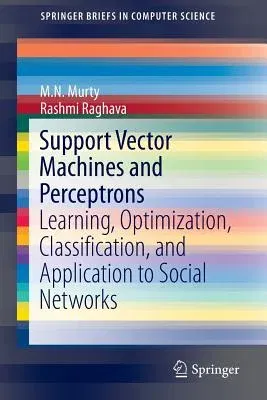M N Murty
(Author)Support Vector Machines and Perceptrons: Learning, Optimization, Classification, and Application to Social Networks (2016)Paperback - 2016, 25 August 2016

Qty
1
Turbo
Ships in 2 - 3 days
In Stock
Free Delivery
Cash on Delivery
15 Days
Free Returns
Secure Checkout
Part of Series
Springerbriefs in Computer Science
Print Length
95 pages
Language
English
Publisher
Springer
Date Published
25 Aug 2016
ISBN-10
3319410628
ISBN-13
9783319410623
Description
Product Details
Authors:
Book Edition:
2016
Book Format:
Paperback
Country of Origin:
NL
Date Published:
25 August 2016
Dimensions:
23.39 x
15.6 x
0.58 cm
ISBN-10:
3319410628
ISBN-13:
9783319410623
Language:
English
Location:
Cham
Pages:
95
Publisher:
Weight:
167.83 gm

